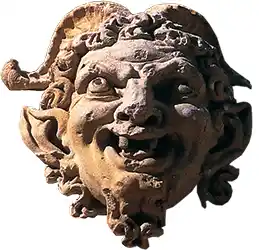











history
On the road between Fontainebleau and Sens stands a small, isolated village with a Renaissance chateau protected by medieval walls. Its origins are lost in the mists of time and in those nights when Jehan de Vallery, his sparkling armour glinting, laid siege to Damietta in Egypt during the Seventh Crusade alongside King Louis IX of France. In those days, the fortress at Vallery could accommodate five thousand men-at-arms.
The vaulted cellars are survivors of this period, as are the imposing ramparts, now flanked by towers from different ages.
On 16 April in the year of Our Lord 1548, a plot of land in Vallery was acquired by Saint-André, Marshal of France and a favourite of France's King Henry II, for the sum of ninety-five thousand pounds – a fortune at the time.

Le Maréchal de Saint André 1510-1562
He called upon the most talented architect of that time: Pierre Lescot.
Pierre Lescot's destiny was nothing short of fantastic: Canon of Notre Dame de Paris for 25 years, he had the supreme honour of constructing the new Louvre under the reign of five successive kings.
As Madame de Lafayette wrote: "Marshal Saint-André, who was always looking for opportunities to showcase his magnificence, begged France's King Henry II, under the pretext of showing him his newly constructed home, to do him the honour of going there to dine with the queens. The marshal was overjoyed to be able to display such a profusion of lavish expense to Madame Cleves."

Pierre Lescot 1515-1578
Work was carried out at a brisk pace and the King and his court came to stay in Vallery on 19 and 20 March 1550. According to Brantôme: "Anyone who saw Vallery furnished in those days would have been unable to estimate either the extent of the treasures it held, or how much they were worth."
The floors and walls were swathed in Turkish rugs, marten and lynx furs and tapestries from Flanders, the most famous of which later adorned the apartments of Cardinal Mazarin. The stables were home to magnificent mounts from different countries: barbs, Spanish jennets, etc. When the marshal died, his possessions were sold off in "auctions one thought would just never end".
Saint-André had vines planted all around the chateau in Vallery and did not hesitate to send ox-drawn carts to fetch soil from the four corners of France. King Henry II himself helped stock the chateau's cellars. Saint-André equipped his chateau with a menagerie, from which he offered a bear to the dauphin François, son of Henry II. Vallery was in a permanent whirlwind of hunts and banquets, masked balls and drunken feasts; it rang with the sounds of laughter, dancing and whispers and the rustle of fine fabrics. Thanks to Saint-André - a “true Lucullus of luxury, carousing and magnificence” – France's royal court was soon to experience the epitome and the excesses of partying beneath laughing faun and faunesse masks chiselled into keystones.

Much to the marshal's distress, a clumsy jouster, Field Captain Montgomery, sank his lance into the king's eye during one of the tournaments. The king died from his injury. His son François II succeeded him, but died the following year. Then the formidable Catherine de' Medici came to power. She did not share her deceased husband's feelings of friendship towards Saint-André and revoked the donations that had been awarded. All Saint-André could think about from then on was fighting the Protestants. He died in combat in the year of Our Lord 1562, from a bullet in the head. He left behind him a widow, Marguerite de Lustrac.
She was an extremely ambitious woman, intent on remarrying without delay. Her choice fell upon a blood prince, Louis I of Bourbon, the first Prince of Condé.
All the better to seduce him, Marguerite de Lustrac changed her religion, for Condé was a Huguenot leader. She offered him her chateau and her riches. Condé accepted the gifts… but turned down the lady! He died in Jarnac in 1569, in exactly the same way as Saint-André.

Louis I de Bourbon-Condé 1530 -1569
In 1609, Henry II, the third Prince of Condé, married the extremely wealthy Charlotte de Montmorency, daughter of the Constable of France. King Henry IV, with his own interests at heart, gave the marriage his blessing. For the bride was beautiful, all too beautiful, and the king wanted her. He was counting on the accommodating nature of her husband, but Condé was on his guard and took his wife to his chateau in Vallery, declining royal invitation after royal invitation.
When the invitations eventually became too pressing, he went to court alone. The king's passion took on such excessive proportions that the distance separating Fontainebleau from Vallery very quickly became insignificant.
Out of his mind with love under the skies of France, the king forgot his sovereign rank. Firstly, he ordered Malesherbes to sing his love. Then, with two of his most faithful companions, the king entered onto his cousin's (the prince's) land; for his first trip he was disguised as a falconer and for the second as a hounds' man with a patch over one eye. King Henry finally retreated. Meanwhile, Henry of Condé was gripped with fear at just how far the king – his king – had gone. France in all its history had never witnessed such a situation. In order to remove his wife from the royal flame the prince left Vallery and sought refuge in Brussels.

Charlotte de Montmorency 1594 - 1650

Henri IV 1553 - 1610
Henry IV, drunk with pain, attempted to waylay the carriage at the border, but he was too late. Once in Brussels, Henry of Condé called for the Pope to intervene. As for the king, he called upon Charlotte's father, the Constable of France Henry de Montmorency, claiming that Condé was mistreating his young wife. It was at this time that Henry IV, invigorated by his passion, decided to organise the most powerful army in the world in order to take Brussels by storm, to make the House of Austria (his eternal rival) see reason, and to pull Charlotte into his arms.
The King of France’s powers were at their zenith and Europe in its entirety would have gone up in flames had Ravaillac not done away with the aging Romeo on 14 April in the year of Our Lord 1610. Henry II of Condé was busy in Vallery orchestrating the power wielders in the kingdom to oppose the regency of Marie de' Medici, who was drawing closer to the House of Austria and the Pope. She had “Monsieur le Prince” imprisoned in Vincennes. Twenty years later, the prince welcomed Louis XIII to Vallery.

Henri II de Condé 1588-1646 sculpted by Gilles Guérin, Vallery church
The fourth Prince of Condé, Louis II of Bourbon known as "Le Grand Condé", grew up at the Chateau de Vallery. "This hero born for war, the most illustrious of his race" was compared to Julius Caesar and Alexander the Great by his contemporaries. He was appointed commander of the army of Picardie and became known as "Le Grand Condé". He marked up a series of dazzling victories and after his triumph at Rocroi (1643) was compared to Corneille's "Le Cid".
Throughout his entire life, the flamboyant character described as “the greatest of French captains” made a point of protecting and encouraging a host of artists including Molière, Racine, Corneille, La Bruyère and Boileau.
When he wasn't wielding a sword on some battle field, Monsieur le Prince - whom "gun-shot reached but could not bring down" - liked to head back to the land of his forefathers, as his many letters from Vallery show.
Although he soon adopted his chateau in Chantilly as his main residence, inherited from his mother's Montmorency family, Grand Condé was never to forget the land of his ancestors; he chose Vallery as the site for a mausoleum in memory of his father and ordered that he be buried there, too.

Le Grand Condé 1621-1686 by Antoine Coysevox
Chateau de Vallery gradually fell into oblivion. To cope with its enormous maintenance costs, the successors of the Princes of Condé decided to subject it to a series of mutilations.
One summer at the end of the 1980s, I was camped out on the ground floor of the Renaissance building - the only section of the estate still vaguely habitable at that time. My son Jonathan was always impatient for each weekend to come around so he could return to his "chateau in the stars". Guidebooks talked about an ivy- and nettle-infested ruin, the noble remains of a prestigious past.
On 15 December 1989, I signed for a citadel buried in History.
With the help of France's Department for the Conservation of Monuments and Historic Buildings I knocked down the partition walls that divided the Grande Galerie into nine salons and bedrooms, all dilapidated, on two floors. I then created a 500-m² trompe-l’oeil inspired by the "Field of the Cloth of Gold" (Camp du Drap d’Or) for the Salle des Tentures reserved for candle-lit suppers. Next came the Medieval Cellars and twenty or so bedrooms.
We also uncovered the stone bridge leading to the entrance tower. In 1994, we laid out the small water garden, the Rose Garden and the medieval part of the chateau. Then in 2000, the stables were converted into the Oriental Pavilion with a swimming pool that can be seen on the Vallery Book.
On 1 August 2006, for our wedding, Ariane and I inaugurated 2 very unique apartments. One is the Loft, on the theme of Buddha. The other is the Dovecote, our "Pigeonnier". It has 2,844 pigeonholes and is the biggest dovecot in France; but its 5,688 princely birds are now just a distant memory. The dovecot now offers shelter to but one loving couple, gazing through its glass roof at the moon and the stars in Vallery’s sparkling sky. In 2008, the palm grove took form beneath the ramparts. It hosts 4 bedrooms entirely constructed in oiled teak from Java, plus a small Balinese gazebo shaded by palm and olive trees.
Then in 2012 we inaugurated the Music Rooms dedicated to the musical instruments used for royal entertainment - the "Menus Plaisirs" of Louis XIV.
The Music Rooms extend into the Closerie Garden and can thus be used for drinks or for dinners spilling into the grounds and into beds of rhododendrons, camellias, honeysuckle and climbing roses. Then finally, in 2013, my book "Princes, Muses and Weddings" was published by Gourcuff Gradenigo. It takes a look back at the celebrations that have taken place at the chateau. It also explores the arts of fire, dining, dancing and seduction...



In fact, Vallery also made me realise that well before inventing the wheel, man had already discovered masks, dancing and make-up!
At Vallery, no wedding is more exceptional than any other. Large-scale or small, each one is unique and those that are yet to be celebrated here will be different again - perhaps because each couple has its own past, its own present and its own future. And their particularities are always revealed when they visit the venue, on site or virtually.
Amodest and simple wedding reception can be as thrilling as the most luxurious of events - because the setting itself is so generous. There are no restrictions here; all night long the sound of music can drift to the very fringes of the forest.
The chateau and its ruins are the silent keepers of memories long since erased from the memory of man, that only the night birds flying over the citadel continue to recount at dawn.
owner of Chateau de Vallery




